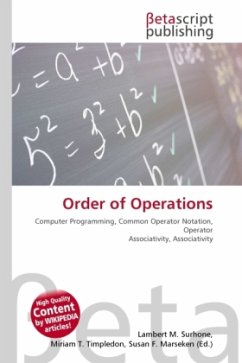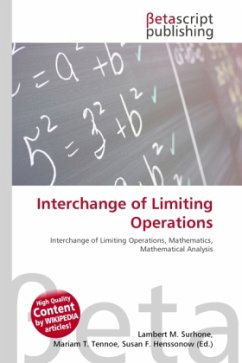
Order of Operations
Versandkostenfrei!
Versandfertig in 6-10 Tagen
19,99 €
inkl. MwSt.

PAYBACK Punkte
10 °P sammeln!
High Quality Content by WIKIPEDIA articles! In mathematics and computer programming, an expression or string of symbols intended to represent a numerical value must follow commonly accepted and unambiguous rules. For example, the rule for evaluating 2 + 3 4 in mathematics and in most computer languages is to do the multiplication first, so the correct answer is 14. Sometimes parentheses, which have their own rules, may be used to avoid confusion, thus: 2 + (3 4). When a term in an expression is both preceded and followed by an operator such as minus or times, the convention needed to clarify w...
High Quality Content by WIKIPEDIA articles! In mathematics and computer programming, an expression or string of symbols intended to represent a numerical value must follow commonly accepted and unambiguous rules. For example, the rule for evaluating 2 + 3 4 in mathematics and in most computer languages is to do the multiplication first, so the correct answer is 14. Sometimes parentheses, which have their own rules, may be used to avoid confusion, thus: 2 + (3 4). When a term in an expression is both preceded and followed by an operator such as minus or times, the convention needed to clarify which operator should be applied first is known as a precedence rule or, more informally, order of operation. From the earliest use of mathematics notation multiplication took precedence over addition, whichever side of a number it appeared on.












